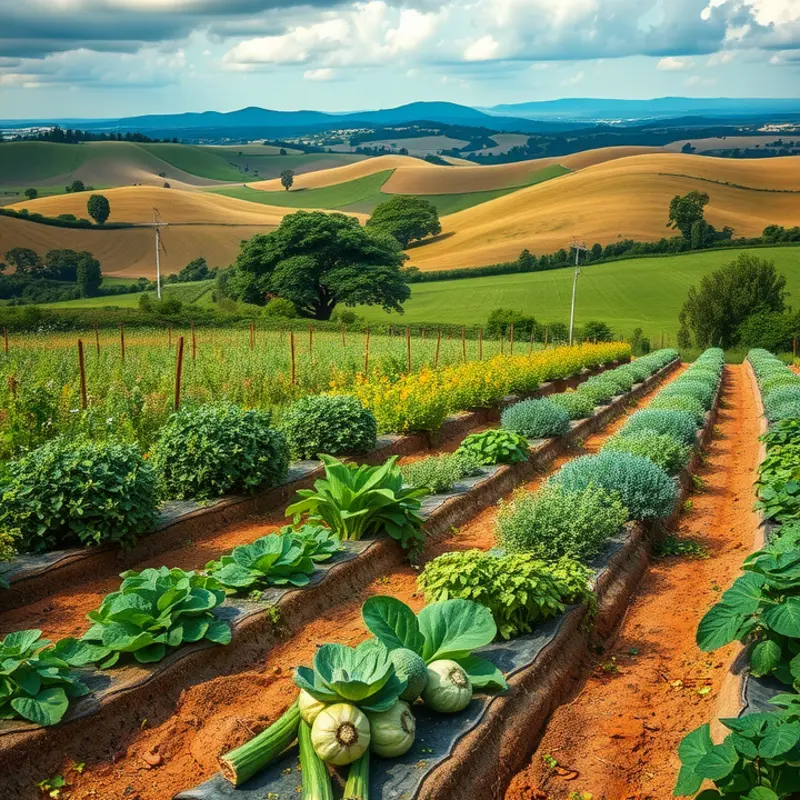Preserving food without plastic not only helps mitigate waste but also promotes a healthier home environment. With simple techniques and sustainable materials, you can store food safely while minimizing your ecological footprint. From choosing the right containers to alternative preservation methods, adopting a plastic-free approach can enhance both your culinary adventures and your commitment to reducing plastic usage.
Natural Containers and Alternatives

Transitioning to plastic-free food storage can begin with embracing traditional and natural materials. Glass containers, renowned for their durability and inertness, provide a chemical-free environment for your food. They don’t leach harmful substances, which makes them ideal for a variety of food types. Opt for mason jars, which come in an array of sizes, allowing for tailored storage solutions. Use larger jars for soups and stews, medium jars for grains, and smaller ones for spices or leftovers.
To ensure your jars are sealed well, ensure the lids fit tightly, creating a vacuum when closed. For liquids, leave space at the top before sealing; this promotes safety and longevity by allowing room for expansion during freezing.
Metal containers, particularly stainless steel, are another excellent alternative. They are lightweight, unbreakable, and immune to odor retention. Select container sets that nest within one another for easy storage. Metal tins with snug-fitting lids are perfect for items like dry snacks, coffee, tea, and even fresh salads. To increase longevity, always dry containers thoroughly after washing to avoid rusting.
Turning to fabric materials, beeswax wraps offer a versatile solution as they are pliable and reusable. These wraps, coated with beeswax, jojoba oil, and tree resin, mold around foods and containers, using the warmth of your hands. They are excellent for wrapping cheese, bread, fruits, and vegetables. To maximize their life, clean them with cool water and mild soap. Be cautious not to expose them to heat which can melt the wax.
Cloth bags, ideal for storing produce, bread, and bulk goods, further incorporate fabric into food storage. Choose bags made of organic cotton, which is breathable yet sturdy. These bags help control moisture buildup while allowing ethylene gas, which hastens ripening, to escape. For storing fresh greens, slightly dampen a cloth bag to help maintain the crisp texture of your produce. When not in use, these bags can be folded flat for easy storage.
To maintain an eco-smart kitchen storage system, organizing by size and type helps. Store commonly used items at eye level for easy access. Additionally, a spice rack with small glass jars offers a minimalist aesthetic while staying functional. When transitioning to these alternatives, gradually phase out plastics, focusing first on items you frequently replace.
Understanding the environmental impact of your choices is crucial. Adopting sustainable kitchen habits not only promotes better health but also contributes to larger ecological solutions. For more tips on eco-friendly storage methods, explore eco-smart kitchen storage. Together, these practices will lead you to a kitchen that not only functions effectively but also resonates with the principles of sustainability.
Preservation Techniques Without Plastic

Implementing food preservation techniques without relying on plastic is not only sustainable but also supports maintaining the nutritional quality of foods. Let’s explore a few effective methods.
Fermentation
Fermentation is a time-tested method that enhances both flavor and digestive benefits. Begin with vegetables like cabbage or cucumbers. Chop them into small pieces. Place in a glass jar and add a mixture of non-iodized salt and water. Ensure all pieces are submerged to prevent mold. Cover the jar with a breathable cloth secured with a rubber band. Store in a cool environment for several days to weeks, tasting regularly until desired tanginess is achieved.
Pickling
Pickling adds a tangy twist to food. Use a solution of vinegar, water, and pickling spices. Begin with cucumbers, carrots, or beans, cleaned and trimmed. Pack them tightly into a sterilized glass jar. Pour the hot vinegar solution over them, leaving some headspace at the top. Seal with a BPA-free lid. Allow the jars to cool and store them in a cool, dark place for at least a week before use.
Drying
Drying removes moisture from foods, significantly extending their shelf life. Sun-drying, oven-drying, and using electric dehydrators are popular methods. Sun-drying suits fruits and herbs best. Slice fruits thinly and place them on a screened rack under sunlight, covering them with cloth to shield from pests. Oven-drying requires spreading thin slices on a baking sheet and setting the oven to its lowest setting, typically between 100-150°F (37-65°C), with the door slightly ajar. Automated dehydrators offer a more controlled drying environment without invasive chemical treatments.
Freezing
Freezing requires no plastic when using glass containers or stainless steel tins. Blanch vegetables in boiling water for a minute or two, then transfer them to an ice bath to preserve color and nutrients. Lay them on a towel to dry. Once moisture-free, place them in glass containers or stainless steel tins. Label them with dates for optimal rotation and easy tracking.
Preserving Nutritional Quality and Longevity
Store foods in climates appropriate to their preservation method. Fermented goods favor cool, dim places, while dry foods last longer in airtight conditions away from sunlight. Rotate preserved goods to ensure older items are used first, helping maintain optimal freshness.
To learn about further eco-smart kitchen strategies, explore additional techniques in this guide to eco-smart kitchen storage. By integrating these practices, reducing plastic dependence while ensuring nutritious and flavorful meals is achievable. Fostering both environmental responsibility and your family’s health becomes a harmonious blend of efforts.
Final words
Adopting a plastic-free approach to food preservation is a rewarding venture that benefits both your home and the environment. By utilizing natural containers and exploring diverse preservation techniques, you can significantly reduce your reliance on plastics. Embrace these practices to not only extend the life of your food but also support sustainable living. The transition might require some adjustment, but the impact on waste reduction and your health is invaluable. Start your journey toward a plastic-free kitchen today and enjoy the rewards it brings.







